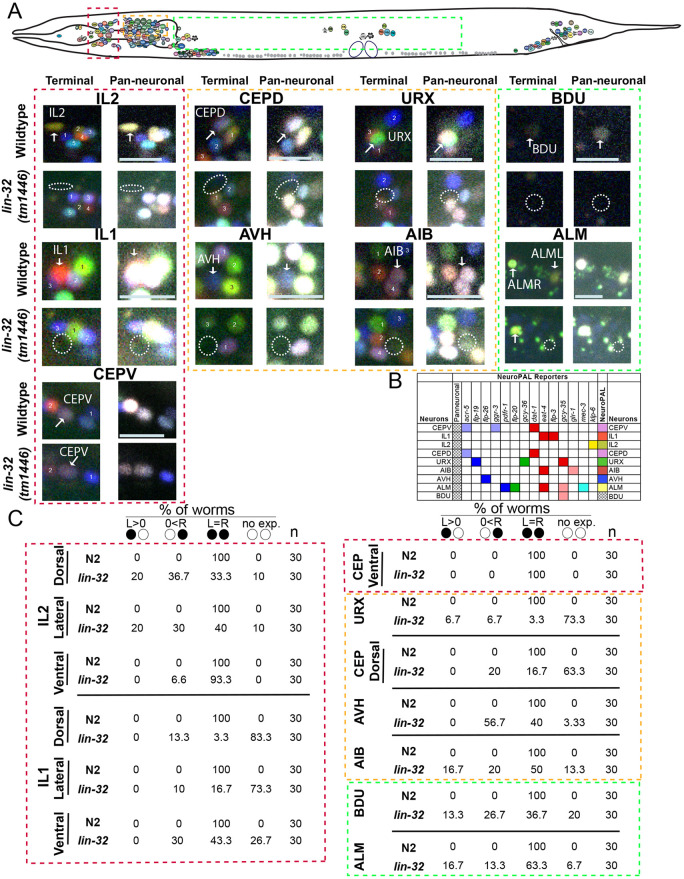Fig. 3.
Proneuronal activities of lin-32 in specific lineages. (A) The terminal, neuron type-specific and pan-neuronal identities of many neurons that express lin-32 during development are affected in lin-32(tm1446), as revealed here using the cell-fate marker strain NeuroPAL (otIs669). Boxes with different color codes highlight the ganglia for neurons (schematized at the top of the figure) exhibiting fate defects. Neurons (indicated by 1, 2, 3, etc.) that differ in wild-type versus mutant animals are indicated by arrows (see Materials and Methods for notes on cell identification); the locations where neuron colors are missing from mutants are circled by a dashed line. Neighboring neurons with similar identity in mutant and wild-type animals are labeled with corresponding numbers (some neuron colors appear to differ between wild type and mutant because some neurons lie out of the plane of focus; see Materials and Methods and Fig. S1). The neighboring neurons are used as landmarks to ID the cell of interest (see Materials and Methods). (B) The NeuroPAL reporter-fluorophore combinations that were responsible for coloring each neuron type. Cell-fate alterations are determined by changes in this color code. With this code, lost colors can be directly mapped back to losses of reporter expression, thereby determining mutant effects on cell identity. (C) Data for the terminal and pan-neuronal fate defects shown in A, indicating the percentage of animals that display the wild-type NeuroPAL color code for the indicated neuron class. No instances were observed in which the terminal markers were affected but the pan-neuronal identity remained intact. The same effects of lin-32 on dat-1 expression in CEPD (i.e. loss of expression) and CEPV (i.e. no effect detected) have been previously reported (Doitsidou et al., 2008). Circles indicate bilateral left-right homologs of the respective neuron class (L>0, expression only in left neuron; 0<R, expression only in right neuron; L=R, expression in both neurons, i.e. wild type). Scale bars: 10 µm.

